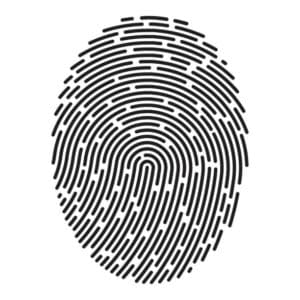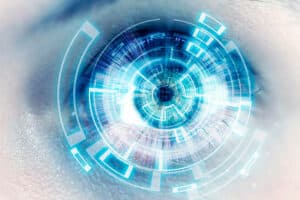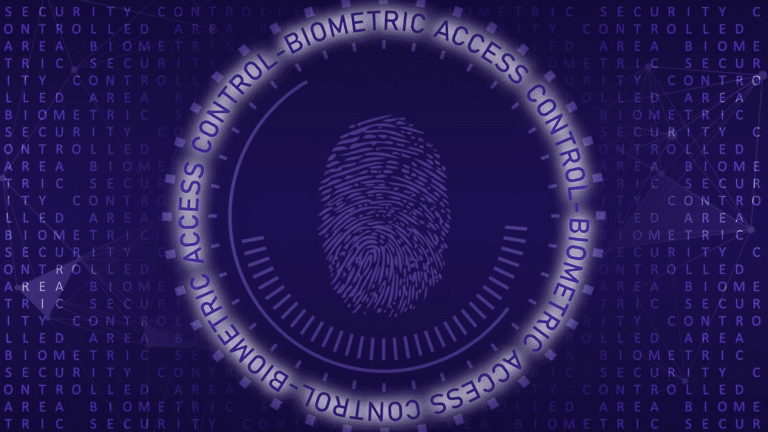In today’s world, security is of utmost importance, especially when protecting valuable assets and confidential information. Traditional access control systems, such as keys and swipe cards, are limited and can be easily compromised. Biometric access control is useful in this situation.
Biometric access control is a security system that uses an individual’s unique biological or behavioral traits to grant or deny access to a specific area or information. Unlike traditional access control systems that rely on keys or cards, biometric access control uses characteristics that are difficult to duplicate or forge, providing a higher level of security.
In this post, we shall discuss the following:
- How A Biometric Access Control Work?
- Some Of The Benefits
- The Common Types
- What Are The Factors To Consider When Implementing Biometric Access Control?
- Choosing The Right Biometric Access Control For Your Business
- The Role Of A Professional Locksmith
- Installation And Maintenance
How Does Biometric Access Control Work?
By capturing biometric data of individuals and comparing it with saved data in the database, biometric access control systems operate. The process involves several steps such as enrollment, storage, comparison, and decision-making. In the enrollment stage, an individual’s fingerprint pattern or facial characteristics are captured and converted into a digital template. This is then safely stored in a computer database. To gain entry to a secure area, one captures their biometric data which is then compared to the stored template. When there is a match, access is allowed while when there is no match entry is denied.
The technology behind biometric access control systems depends on the type of bio-metric trait that has been deployed. For instance, sensors are used by fingerprint scanners to record unique ridges and valleys on a person’s finger. Meanwhile, cameras are employed by facial recognition systems to capture human faces before analyzing them using algorithms. In addition, voice recognition systems require amplifying voice patterns for analysis against pre-recorded templates to authenticate someone’s identity. Regardless of its form of application, however, biometric identification techniques provide rapid yet safe solutions for managing restricted areas.
Benefits of Biometric Access Control
Biometric access control systems have many benefits over traditional ones. Firstly they enable higher security levels since they rely on biological or behavioral characteristics that cannot be easily duplicated or faked hence reducing the chances of unauthorized access considerably. Secondly, physical keys/swipe cards will not be needed because businesses can lose money and time reissuing them whenever they get lost/stolen/duplicated, etc. Further, still it offers users convenience thus saving them from carrying books and physically memorizing keywords; instead through their biological features alone one can seamlessly get authenticated for entrance purposes minimizing any human errors.
Common Types
There are several types available in the market today including:

Fingerprint Recognition
This type of system uses fingerprint recognition systems to determine whether a particular individual is authorized or not. It is one of the most accurate and easiest to use among all types of biometric access control systems.

Facial Recognition
Identifying people by analyzing various facial features such as distances between eyes, nose, and mouth is a facial recognition system. These are usually used in places like airports and high-security zones.

Iris Recognition
The Iris pattern of an individual’s eye is captured using special cameras in iris recognition systems. Since the iris has very fine details, it becomes virtually impossible for anyone to duplicate hence making it highly secure.

Voice Recognition
Voice pitch and tone are used by voice recognition systems when identifying individuals. This type of system is commonly used in call centers and telephone banking.

Hand Geometry
Hand geometry captures the shape and size of the hand and fingers belonging to an individual. Consequently, these are mainly utilized where cleanliness matters like hospitals plus clean rooms.
Factors to Consider When Implementing Biometric Access Control
Making use of biometric access control is an issue that has to be carefully thought over for its effectuality. First, it is important to evaluate the degree of safety required for a particular area or information being protected. Various biometric features offer different degrees of security and the selected system must correspond with the desired level of protection.
Secondly, scalability is another factor to consider. The system should have room for accommodating an increasing number of users as it continues performing optimally. Additionally, one should consider whether it is compatible with other existing security systems such as CCTV cameras and alarms.
Finally, this compassionate biometric data requires privacy handling; firms should ensure robust data protection measures against unauthorized access or misuse of biometric information.
Choosing the Right Biometric Access Control System for Your Business
When choosing a suitable system for your enterprise, you can get confused since there are many alternatives available today. Hence, make sure you take into consideration these factors:
- Accuracy and Reliability: The chosen system must have high accuracy and reliability in identifying individuals’ identity Look out for systems that have been tested over time by clients before making any purchasing decision.
- User-Friendliness: A good point to start however is by ensuring that such a system would be user-friendly enough even for visitors and employees who will be operating them without much ado Any complex or heavy ones can lead to frustrations hence low adoption rate altogether.
- Scalability: Consider the future growth of your business and choose a system that can easily accommodate an increasing number of users without compromising performance.
- Integration: Choose a solution that works well with your existing security infrastructure such as CCTVs and alarms among others so that overall security will be enhanced while at the same time improving operational efficiencies within your organization
- Cost: Evaluate implementation costs including hardware, software, installation costs, and ongoing maintenance expenses Think about what you will gain in the long run before settling on any given option.
The Role of a Professional Locksmith
A professional locksmith is very instrumental in the successful implementation as well as maintenance of biometric access control systems. This is because they have the expertise to evaluate your security requirements and recommend the best biometric system for your business. They also ensure that it is installed correctly and integrated with the existing security infrastructure.
Moreover, they can offer ongoing support and maintenance so that it works at optimum levels all through. In case of any challenge or failure, an expert locksmith can quickly diagnose and resolve such problems cutting on time loss which would otherwise mean insecure situations.
Installation and Maintenance
Knowledge and skills required for installation and maintenance of biometric access control systems are specialized. It is necessary therefore to seek services from a professional locksmith or security provider who has experience installing and maintaining these types of biometric systems. The locksmith will make sure during the installation process that the system is perfectly configured, calibrated, and tested thus its efficiency.
Further, employees are given training on how to use this tool properly because it requires delicate handling when using it Hence regular maintenance should be done to keep it operational Cleaning sensors regularly, updating software frequently, and carrying out periodic tests for accuracy and reliability purposes constitute good system maintenance practices.
Conclusion
Biometric access control is a compelling and revolutionary technology that provides higher security than traditional systems. It employs unique biological or behavioral characteristics of an individual to demonstrate his/her identity reducing the chances of unauthorized entry. By implementing biometric access control businesses can make security better, enhance productivity, and decrease costs associated with traditional access control methods.
However, while choosing and implementing this kind of system, it is important to consider factors such as security requirements, scalability, compatibility, and privacy among others. Through engagement with professional locksmiths, businesses guarantee successful installation, integration, and maintenance of biometric access control systems thus providing a secure environment for employees as well as safeguarding their valuable possessions.
Frequently Asked Questions
1. What is biometric access control?
It is a security technology that utilizes unique physical or behavioral characteristics of individuals to grant or deny access to a secure area. These characteristics include fingerprints, iris patterns, facial features, voice prints, and hand geometry.
2. Who should install and maintain biometric access control systems?
It is suggested to hire a licensed locksmith or security provider who specializes in the installation/maintenance of biometric systems.
3. How does biometric access control work?
It works by capturing and analyzing the unique biometric traits of individuals. When a person tries to access a secure area, their biometric data is compared with the stored data in the system. If there is a match, access is allowed; otherwise, it is refused.
4. Why should I hire a professional locksmith for biometric access control?
A professional locksmith possesses the necessary skills and expertise to install, configure, and maintain the systems effectively. They will ensure seamless integration with your existing security infrastructure and provide ongoing support and maintenance.
5. Can biometric access control systems be hacked?
While no security system is completely foolproof, biometric access control systems are highly secure. The use of unique biometric characteristics makes it extremely difficult for unauthorized individuals to gain access. However, it is essential to employ additional security measures to protect against potential vulnerabilities.


